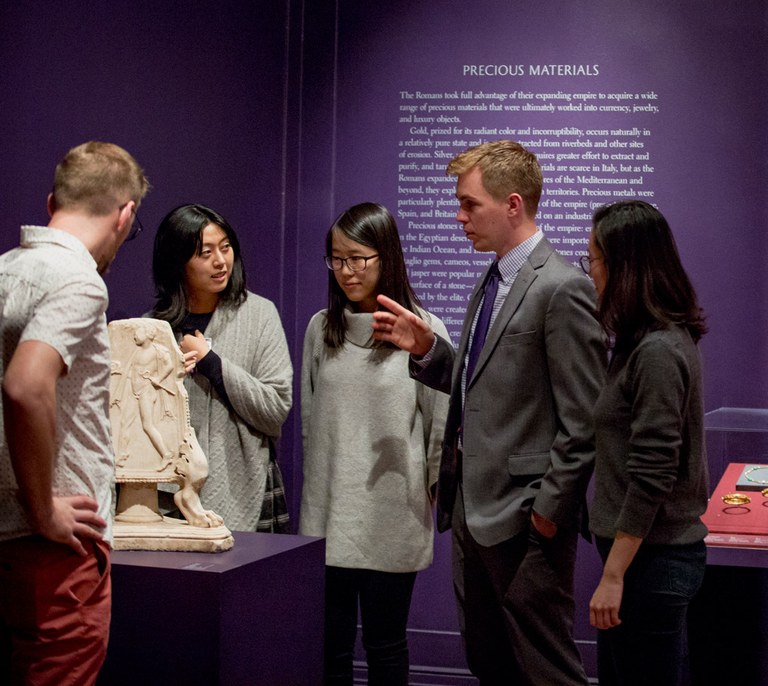From the Director (Fall 2019)
This article by Alexander Jones first appeared in ISAW Newsletter 25 (Fall 2019).
 Photo ©Kahn: Courtesy of NYU Photo Bureau
It is often said that one difference between the natural sciences and the humanities is that the norm in the sciences is research by teams—recall the 2015 physics paper announcing an estimate of the Higgs boson’s mass that had 5,154 authors, the list of whose names accounted for a quarter of the page count—while the norm in the humanities is the lone researcher. At ISAW, however, you can find collaborations going on wherever you look, whether in our teaching, our research, our exhibitions, or our other public programming. This issue of the ISAW Newsletter highlights a variety of ways in which individuals within ISAW or partnerships involving ISAW and other parts of NYU or other institutions expand our resources for studying the ancient world.
Photo ©Kahn: Courtesy of NYU Photo Bureau
It is often said that one difference between the natural sciences and the humanities is that the norm in the sciences is research by teams—recall the 2015 physics paper announcing an estimate of the Higgs boson’s mass that had 5,154 authors, the list of whose names accounted for a quarter of the page count—while the norm in the humanities is the lone researcher. At ISAW, however, you can find collaborations going on wherever you look, whether in our teaching, our research, our exhibitions, or our other public programming. This issue of the ISAW Newsletter highlights a variety of ways in which individuals within ISAW or partnerships involving ISAW and other parts of NYU or other institutions expand our resources for studying the ancient world.
Co-taught graduate classes such as the research seminar on “the Buddhist Millennium in Western Central Asia” (p. 10) are frequent occurrences in the curriculum, allowing the investigation of topics that fall partly within the expertise of two or more scholars. Our “core” Seminars in the Study of the Interconnected Ancient World, which are now a required component of the doctoral program, draw on a still wider range of ISAW faculty plus occasional colleagues to explore themes of interconnection and contrast spanning the full extensions of time and space that come within ISAW’s scope. Another mode of combining diverse strengths is when our students can work with our digital, library, and exhibitions departments; for one student’s hands-on experience as Exhibitions Assistant see p. 4.
Exciting things can happen when students form their own collaborations with other students, whether within our walls or linking institutions. Thus our recent conference “Scientific Traditions in the Ancient Mediterranean and Near East” (p. 14) was the fruit of an international research collaboration whose core is, unusually, composed not of more senior scholars but of doctoral students at ISAW, the University of Copenhagen, and Johns Hopkins who are all working on Egyptian medical and astral manuscripts. The success of this two-day event was an indication not only of these students’ already impressive learning, but also of their organizational talents.
Archeological excavations are quintessentially team exercises. On pages 10-11 you can read the latest news from the impressive 2019 summer season at Kınık Höyük, itself a collaborative project between ISAW and the University of Pavia, directed by ISAW’s Lorenzo d’Alfonso. The article highlights contributions by two of our students, an ISAW research associate, and our Emeritus Director and Professor Roger Bagnall. As you will see, their labors have not been strictly for the birds!